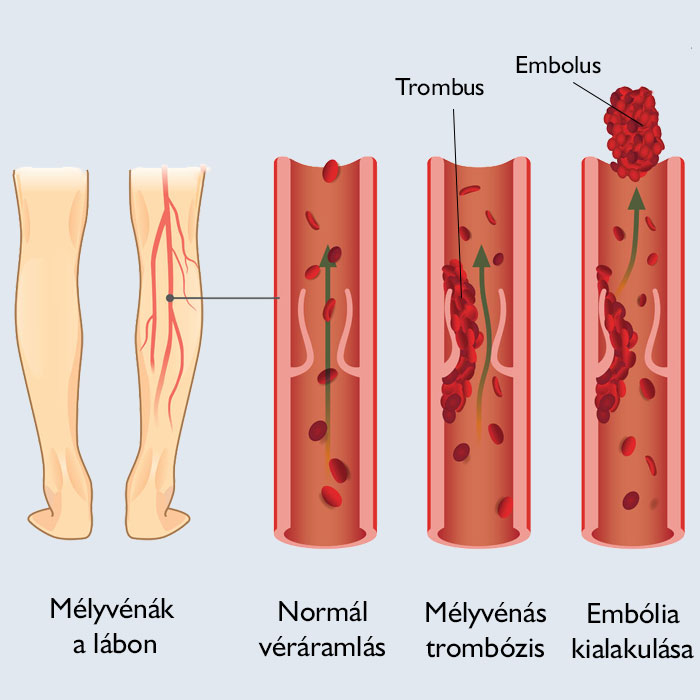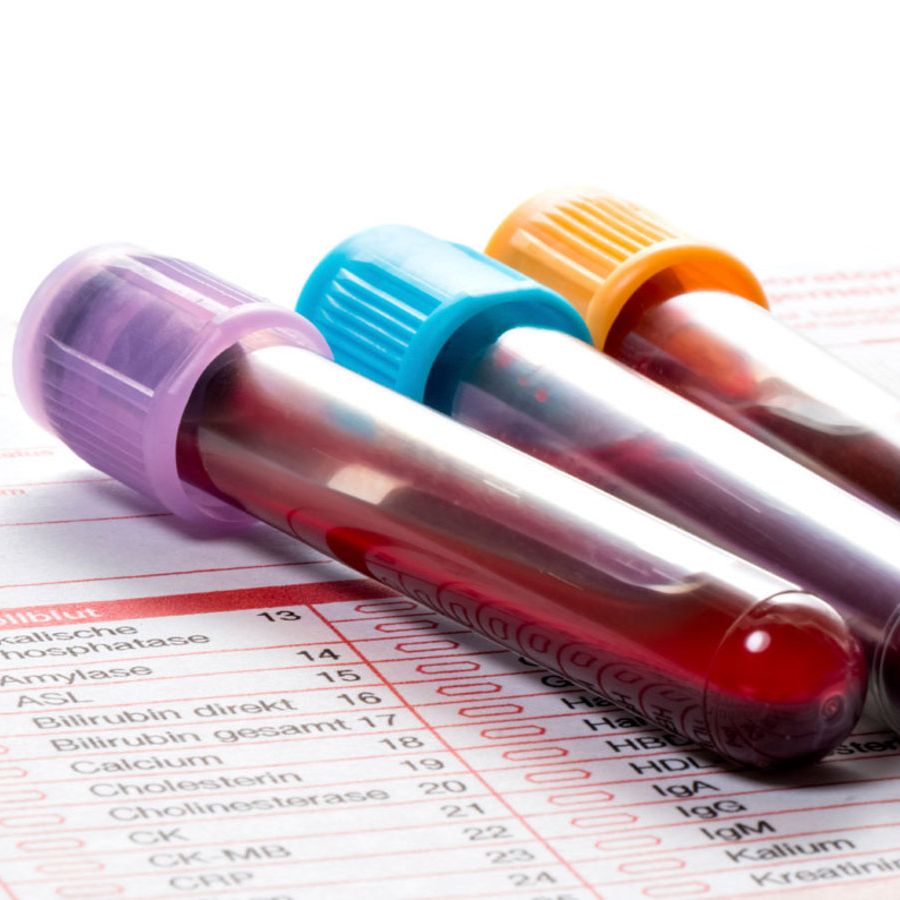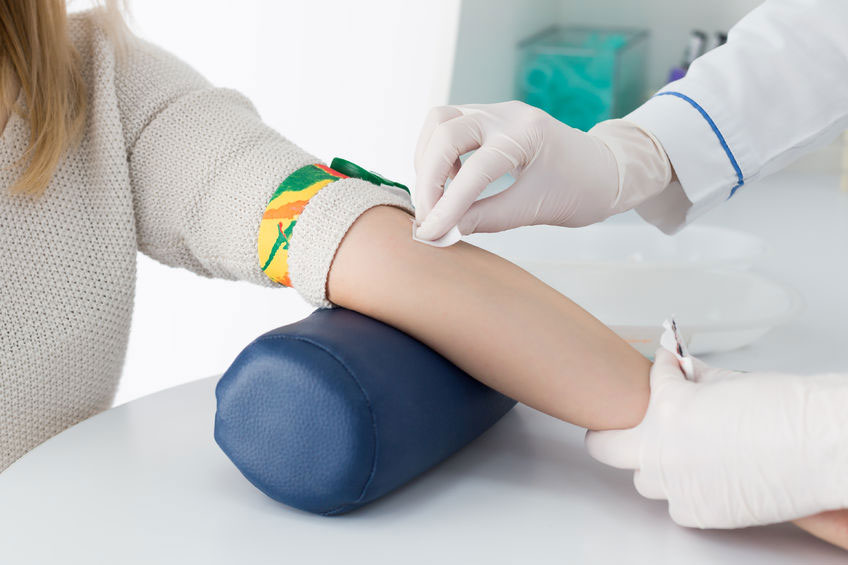Laboratory test for predisposition to thrombosis (thrombophilia)
The package helps investigate congenital and acquired coagulation disorders. Coagulation disorders can cause thrombosis (blood clots, blockages) or embolism. The package includes measurements of coagulation factors and their function.
Genetic predisposition to arterial and venous thrombosis is examined using the MTHFR (C677T, 1298C, MTRRA2756G, MTR A66G) genetic test.
What is thrombosis?
Thrombosis is a disease in which a blood clot (thrombus) forms in the veins, which can partially or completely block the blood flow. The formation of blood clots is caused by a coagulation disorder.
Blood clots can form in different areas of the circulatory system, but are most often formed in the deep veins, typically in the lower limbs, as blood circulation can slow down more easily here. A blood clot can also form in the upper veins, but this is mostly harmless and easy to treat.
If the resulting blood clot is loosely attached to the vessel wall, it can easily come off and the detached blood clot (embolus) will start to drift with the bloodstream. A detached blood clot causes a serious problem when it arrives at a narrower blood vessel section and becomes wedged in and blocks the blood flow. This is when an embolism develops. Blood clots detached from the veins of the legs usually pass through the heart and block one or more arteries in the lungs, causing pulmonary embolism.
It is important to take the symptoms of thrombosis seriously so that major trouble can be prevented and avoided. The most common symptoms are a swollen, red, touch-sensitive, warm limb, which most often occurs around the foot, ankle, or thigh. Swelling is caused by fluid build-up (oedema), which can lead to ulcers later if left untreated. If you experience symptoms, visit an emergency room as soon as possible.

What may be behind a thrombosis?
There can be several reasons for extravascular blood clotting and the formation of blood clots:
vascular wall injury: platelets stick together at the site of the injury
may develop due to permanent bed rest, fixation after surgery or injury, or varicose veins due to slowing of blood circulation
blood clotting factors: oral contraceptives, heart and kidney disease, pregnancy, smoking, long flight
inherited genetic differences: e.g. due to the Leiden mutation.
What tests can be used to screen for a predisposition to thrombosis (thrombophilia)?
Blood clotting is caused by the complex action of several blood clotting factors (proteins). If the balance is upset due to a lack or defect in any of the units, haemophilia or unwarranted blood clotting (thrombosis) develops. Defects are usually caused by some genetic abnormality, increasing the predisposition to thrombosis.
Thrombophilia can be screened, and genetic abnormalities in proteinaceous substances involved in blood clotting can be detected by blood tests.
The laboratory package for the predisposition to thrombosis includes the following tests:
Protein C: a component of the system that prevents excessive blood clots. With its help, blood clotting takes place only at the site of the injury and only lasts as long as it is needed, after which it dissolves. Protein C regulates the process of dissolving the clot. Low levels in the blood indicate excessive blood clots, increasing the predisposition to thrombosis.

Protein S: another component of the system that prevents excessive blood clots, it regulates the dissolution of blood clots with Protein C. Low levels in the blood indicate excessive blood clots and predisposition to thrombosis.
Anti-thrombin III: obstructs the action of a number of blood clotting factors, preventing excessive or inadequate clotting. Its low levels increase blood clotting.
Prothrombin time: used to test blood clotting. It shows the function of the enzyme system that initiates blood clotting. The prothrombin time shows how long it takes for the clot to form. Lower levels may lead to increased haemophilia.

APTT (activated partial thromboplastin time): monitors the function of one of the enzyme systems that regulates blood clotting. It measures the time that passes until clotting.
Prothrombin gene mutation: one of the most important genetic risk factors for the development of venous thrombosis. As a result of the gene mutation, the activity of the coagulation system is increased, thus increasing the predisposition for both venous and arterial thrombosis. The gene mutation may be present in heterozygous (containing one normal and one mutant gene) and homozygous (containing two mutant genes) form. The homozygous form is rare, but in its presence shows that the predisposition to thrombosis is 25 times more of the normal.
Lupus anticoagulant: a functional test for phospholipid antibodies that increase the susceptibility to thrombosis. Lupus anticoagulant positivity increases the predisposition to thrombosis and can cause miscarriages.
Phospholipid antibodies: inhibit the activity of phospholipid proteins in the coagulation process, which can lead to coagulation disorders, vascular occlusion.
APC resistance: is used to detect the most common genetic predisposing factor for thrombosis, the Leiden mutation. Due to the mutation, the protein chain of activated coagulation factor V cannot be broken down by an enzyme called activated protein C (APC). Due to the slowing down of the breakdown of coagulation factors, patients have increased blood clotting and are therefore prone to thrombosis.
Homocysteine: it is normally present in very small amounts in the body, its elevated value can cause vascular disease in any organ, most often the heart (myocardial infarction, coronary heart disease) and the brain (stroke).
In which cases is a thrombophilia test recommended?
It is highly recommended to perform a thrombophilia test in the following cases:
in case of accumulation of thrombosis in the family, especially if the immediate ascender developed thrombosis before the age of 50
infertility or recurrent miscarriages
In addition, it is worth performing the laboratory test:
before prescribing the first oral contraceptive pill
in case of venous thrombosis at a young age (under 50 years)


How do I prepare for the test?
The test is done by taking a blood sample, which does not require any preparation.
The test cannot be evaluated in case of taking Syncumar, Marcumar or new type of anticoagulant inhibitors.
When is the result expected?
Within 20 working days after the test.

